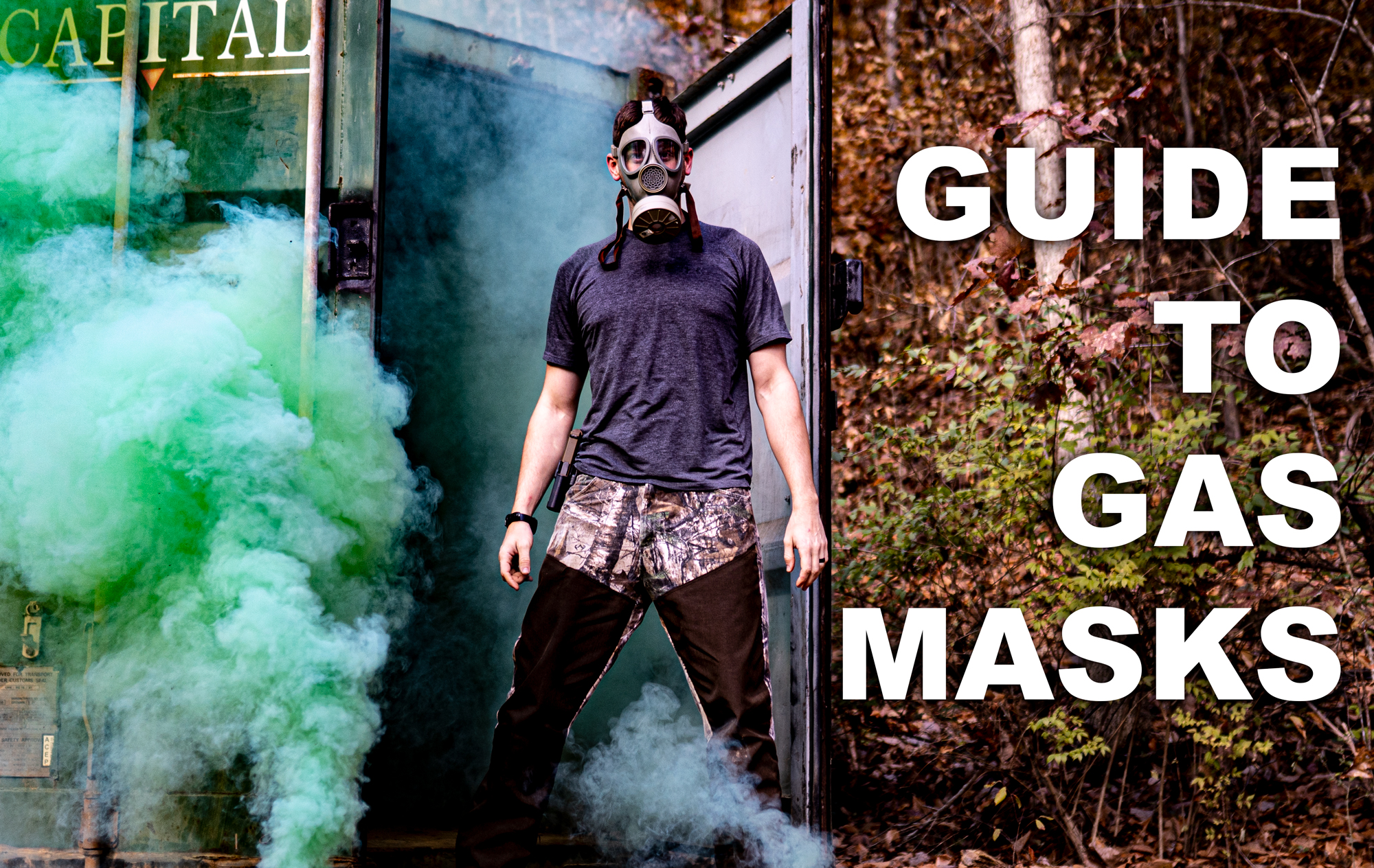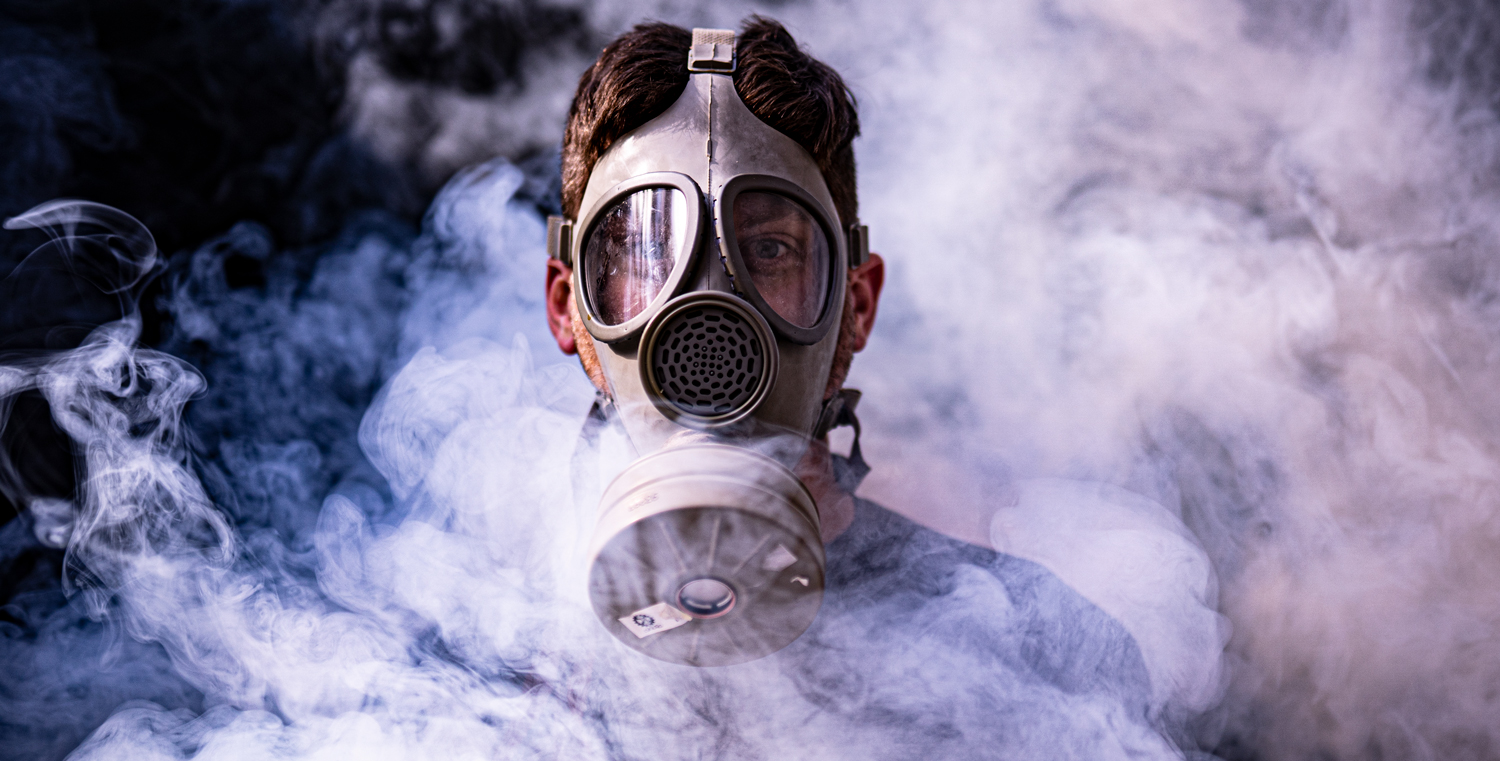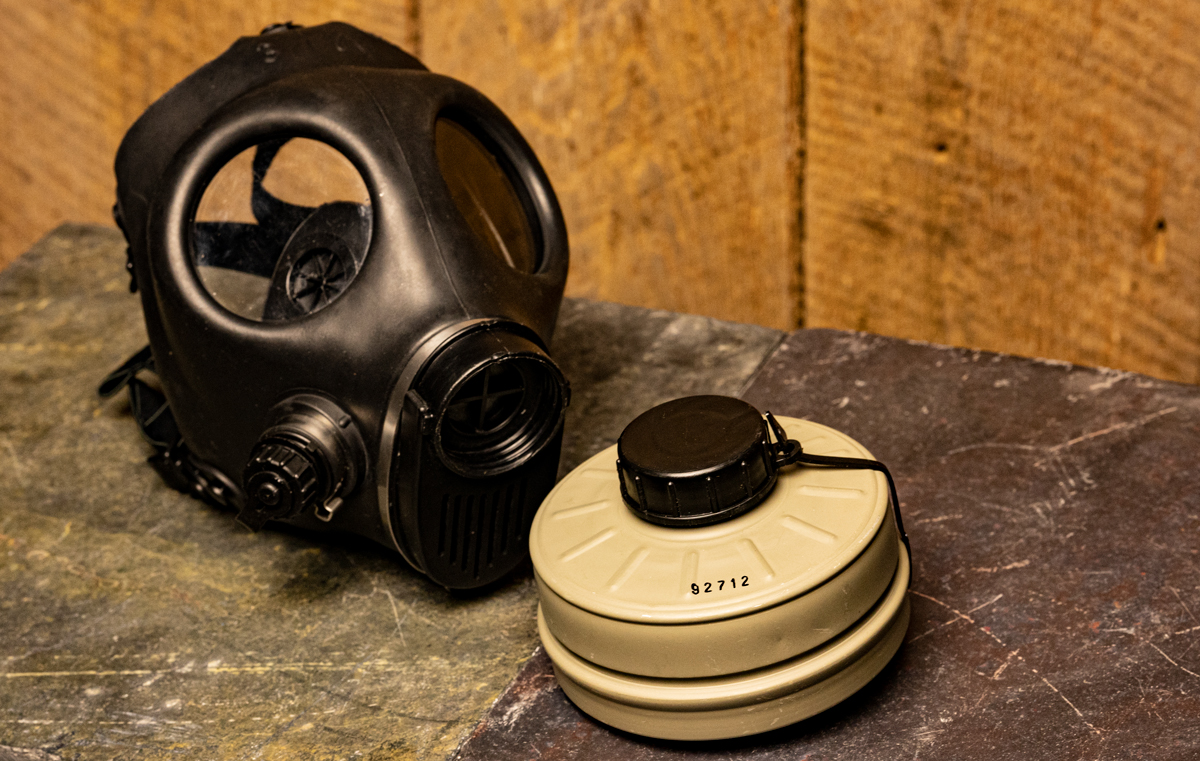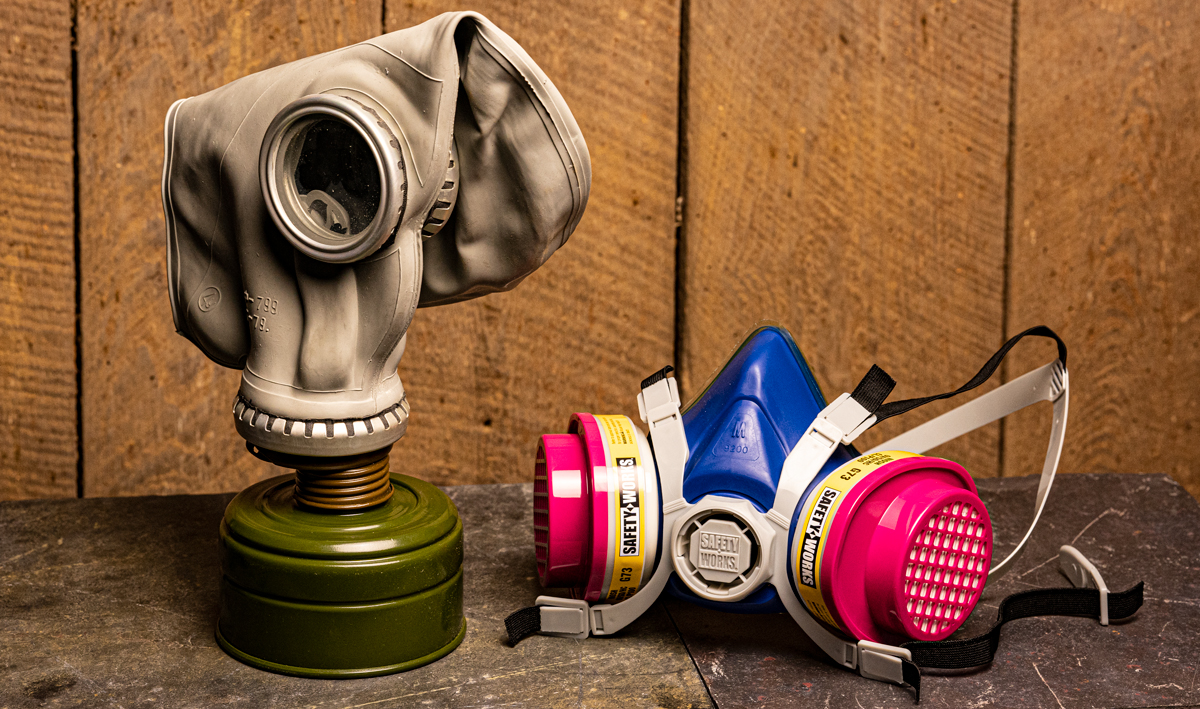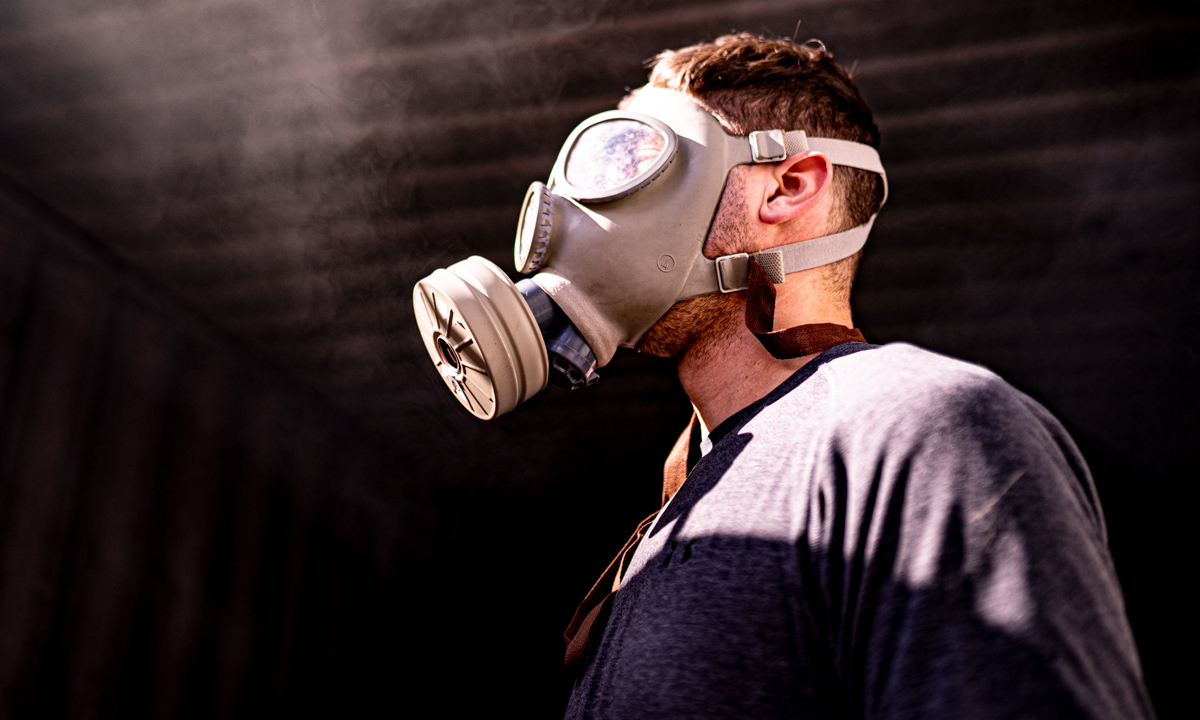Are masks or respirators something you should consider for your bug out bag or emergency plan? Let’s dive into the world of gas masks to learn more.
Are you prepared for anything? You might have enough food, water, and ammunition to last a decade, but are you confident that you can make it through any situation? Have you thought about getting a gas mask?
While the chances of needing a gas mask are likely slim, if you are dedicated to complete preparation, you should at least learn about these items and, if it makes you feel better, know which ones to buy.
What Are Gas Masks Used For?
To understand the best gas masks, it’s often best to understand why some people choose to keep these items in their home at all. The simple reasons, of course, is that you want one. Like non-perishable food, additional water, and a backup power generator, it’s comforting to know that, in the event of an emergency, you have the right equipment and supplies to stay safe.
Of course, the reasons for owning a gas mask can be far more specific.
Nuclear Radiation
In the United States, there are dozens of nuclear power plants. In the event of an unforeseen emergency, however unlikely, having a gas mask could be be the difference in survival. If you live near one of these facilities, you might consider adding a gas mask to your emergency preparations.
Civil Unrest
Peaceful protests, which appear to be more frequent, can easily devolve into violent riots and conflicts with police. Especially if you live in an urban area, you could be caught in the middle and become subject to pepper spray or tear gas.
Air Quality
There has been a steady increase in the number of wildfires, which produce dense clouds of smoke. This smoke can create a variety of respiratory issues, but a gas mask with the proper materials can keep your lungs safe. People living in wooded areas, particularly in the western portion of the United States, may consider purchasing a gas mask.
It’s a simple fact that mankind is terrible at predicting the future. You may never need a gas mask, but some people feel more comfortable keeping one in their home. If you decide to invest in a gas mask, make sure you understand the product you are buying, including what types will best fit your needs.
What is a Gas Mask?
A gas mask, in its most simple description, is simply a portable device that provides clean air to a single individual. They are designed to protect the wearer from harm by creating an air-tight seal around the person’s face. The mask then filters the air that comes into the mask.
They are generally made with a tight-fitting face piece and a filtration system that is imbedded into the mask, usually right around the mouth. They also have transparent eyepieces, as well as a valve for removing air that was exhaled. There are often straps around the backside of the mask that keep the device in place, and some even have a protective hood.
How Do Gas Masks Work?
Most gas masks use some type of filter, which is often replaceable. There are even types of gas masks that attach directly to an oxygen tank, although most simply pull in air and remove contaminants before it is inhaled.
We will dive deeper into materials below, but the filters are commonly made of fibers or activated charcoal, which trap and hold extremely small particles and gasses.
History of Gas Masks
The gas masks you can purchase today, are made with advanced, high-tech materials and use extremely sophisticated designs. You could easily think of them as a modern device, but in truth they have a rich and storied history that goes back centuries.
Who Invented the Gas Mask?
There is evidence that some form of a gas mask was used by the ancient Greeks, who may have used sea sponges to filter harmful dust and noxious air. These early masks were basically just sponges, according to Popular Mechanics.
The first well-documented use of gas masks came in the 9th Century, when gas masks were used in Persia to protect people working in polluted wells.
For roughly 900 years, there is very little said or heard about gas masks. It wasn’t until the late 1700’s that the French inventor Jean-François Pilâtre de Rozier created a respirator.
A respirator is basically a device that covers the mouth and keeps harmful substances from being inhaled. This was an important breakthrough in gas-mask technology; essentially, the respirator is the air-intake portion of a gas mask. (You can purchase respirators for personal use. Often used for dusty work, a respirator is essentially a gas mask that only covers the mouth.)
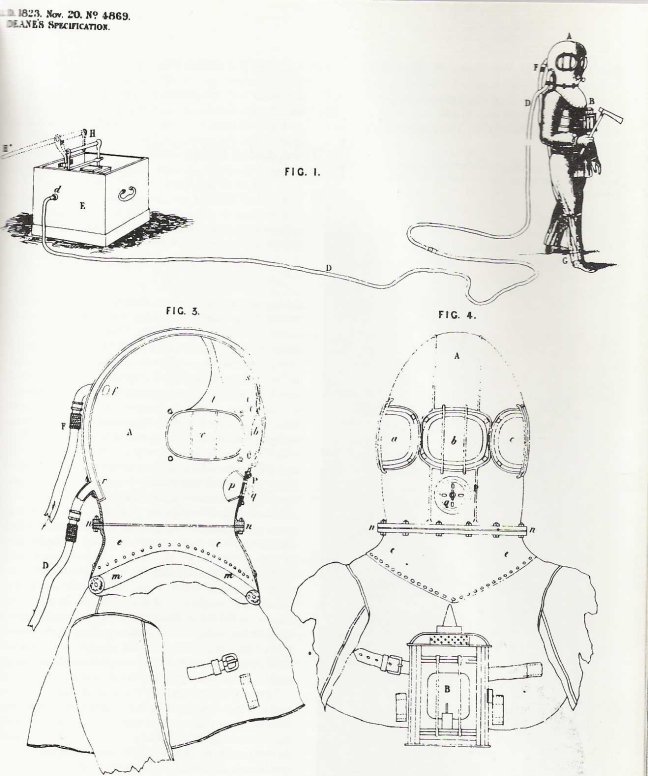
Gas masks continued to evolve. Around the 1828, the Deane brothers attached a hose to an old knight’s helmet. John and Charles Deane made the smoke protecting apparatus for firefighters. By pumping air into the helmet, the wearer was able to enter a burning stable and rescue his horses. (This design was later modified by underwater divers.)
Technology Evolves
But in 1847, the world saw one of the most important additions in gas-mask technology: charcoal.
Charcoal, when properly modified and processes, is a highly adsorbent material. (Yes, adsorbent, not absorbent; there is a difference.) This material would become an important component in the history of gas masks.
It’s likely that the most important period for the development and adoption of gas masks was the First World War. During this conflict, mankind used modern industrial technology to kill each other with ruthless, unimaginable efficiency. Cavalry raids and infantry charges gave way to machine guns, long-range artillery, and tank assaults. Both sides used whatever technology was available, including poison gas.
We won’t go into the various gasses used, suffice to say that each side was gassing the other, which mean both sides needed reliable gas masks. This led to rapid advancements in the quality, reliability, and durability of gas masks. Gas masks were even produced for dogs and horses, which were both still used in military conflicts.
While the basic shape, layout, and design was established throughout the First World War, gas masks continued to evolve, especially the materials being used. Modern rubbers and plastics were eventually added, which give the masks a better fit, superior comfort, and lighter weight.
The addition of “activated charcoal” is also important. Essentially, this is a form of charcoal that has been processed and made extremely porous, allowing it to trap a higher level of contaminants.
What is Filtered by a Gas Mask?
There are many components that can be filtered out by a gas mask, but a lot depends on what type of gas masks and filters you have.
According to OSHA, filter cartridges are assigned a specific color coding. If you want to protect against radioactive materials, for example, you’ll need a purple (magenta) filter. If you are concerned about smoke from wildfires or burning buildings, a filter that protects against particulate matter would be appropriate. You can find filters made for a variety of items, including carbon monoxide, ammonia gasses, and pesticides.
How Long Does A Gas Mask Filter Last?
Generally, once you start using a gas mask, you can use it for roughly 24 hours before you need to replace the filter canister. However, if the air is particularly saturated with chemicals or particles, this time can be reduced drastically. Of course, some filters last longer than others.
Some filters also have an effective shelf life; check with the manufacturer to see if the filter has an expiration date.
Storage is a huge component of gas mask safety. If you use a charcoal based filter, you’ll likely want to store your gas mask and filter in an air-tight container until it’s “go time.”
Choosing the Right Gas Mask
There are many different types of gas masks available today. To help you make the best choice, let’s look at some of the common options…
Respirator vs. Full Gas Mask
First of all, you need to choose between the two basic styles. (Technically a respirator is not a gas mask.)
A respirator is simply a device the covers the mouth, providing clean air to the wearer’s mouth and nose. However, these devices do not cover the eyes, so tear gas, pepper spray, and other chemicals can still be harmful. It’s not uncommon to see people who work in construction or manufacturing wearing a particulate respirator the the one pictured on the right in the photo above.
Most people who are committed to being prepared for any situation will likely choose a full gas mask over a respirator.
According to the Centers for Disease Control, respirators are only effective if:
- the correct respirator is used,
- it’s available when you need it,
- you know when and how to put it on and take it off, and
- you have stored it and kept it in working order in accordance with the manufacturer’s instructions
The CDC also urges citizens to practice with their respirators. It’s not uncommon to find a respirator with a nose clip and special mouth piece. Without familiarity, you could struggle if you ever needed to get a respirator on in a hurry.
Choosing a Gas Mask Filtration System
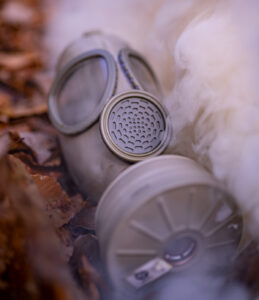
The first option is an air-purifying system. These are the most affordable types; they are essentially an air-tight mask secured around a respiratory system that uses canisters of filtering material. The canisters are replaceable, and usually screw in and out of the mask.
This systems works well, but it relies on a good seal between the mask and your face. While you can create a good temporary seal, any breach will allow the toxins to reach your face and mouth. Basically, if there is a leak, your mask is rendered ineffective. (That’s why you don’t see many beards at a firefighters convention.)
The other basic type is a SCBA mask. These are by far the most effective and reliable, but they are also the heaviest and the most expensive. Standing for “Self-Contained Breathing Apparatus,” SCBA masks (not to be mistaken with the similar scuba system) is a full system that doesn’t just filter air, it uses a tank to supply fresh oxygen to the wearer. Unfortunately, this requires you to carry around a large tank, making them impractical for general use and storage, even if they are far more reliable in the event of an emergency.
Gas Mask FAQ
There can be a lot of confusion with gas masks, so let’s go over some of the common questions people have about them.
In the event of a chemical attack, how long should I wear the mask?
A lot of that will depend on how long the chemical is lingering in the air. As long as there are chemicals in the air, you will want to be wearing a gas mask with a working filter. Hopefully, emergency alert systems will be operational and you’ll know when the threat is gone.
Can children wear a gas mask?
Yes, if it fits properly and provides a seal. Remember that a gas mask is only as good as the seal it provides, so if you have small children you may need a properly-fitted mask or hood.
Many manufacturers do make gas masks that are especially designed for children.
Can I swap out filters while still wearing the mask?
Yes, but, depending on the model, you may allow chemicals or particles to enter into the mask.
For example, if you swap out filters with the mask on, tear gas could enter the mask through the hole and reach your eyes and skin.
Where Can I Buy A Gas Mask?
Gas masks aren’t regulated like ammo or firearms, so you can buy them just about anywhere that wants to carry them. For instance, Amazon carries an assortment of respirators from 3M and also occasionally has surplus gas masks from around the world in stock. Heck, even Walmart carries Israeli gas masks on their website. (Something you might want to pack with you if you go to one of their stores at the wrong time of night!)
Military Gas Masks
It’s quite common to find military gas masks available for sale at surplus stores and online. In our experience, these can be hit or miss. Often, online listings won’t include a size for the gas mask and as you now know, a tight fit is important.
If you opt to buy sight-unseen, be prepared for some trial and error. Like self-defense ammo, this is not a purchase you necessarily want to go with the cheapest available option. It could be a device that means life or death. That said, you can find military surplus gas masks available for $25-$50. If they fit your body well, it could be a smart choice.
How Much Do New Gas Masks Cost?
You can spend as little as $20 on a surplus gas mask or as much as $2000 for a sophisticated mask with electronics or even an oxygen tank built in. You don’t need to spend $2000 on a mask to have something on-hand that offers you protection. Many of the more expensive solutions are designed for industrial use. For instance, if you work in an auto shop that does a lot of painting. These units are designed for comfort – not necessarily survival.
For a new, law enforcement style gas mask that offers full face protection as well as a respirator you can expect to pay about $500.
Wrapping It Up
Now that you know a little about the purpose, history, and general types of gas masks, you are better equipped to make the right decision for your needs. You’re armed with the knowledge, let’s just hope you never have to use it.
